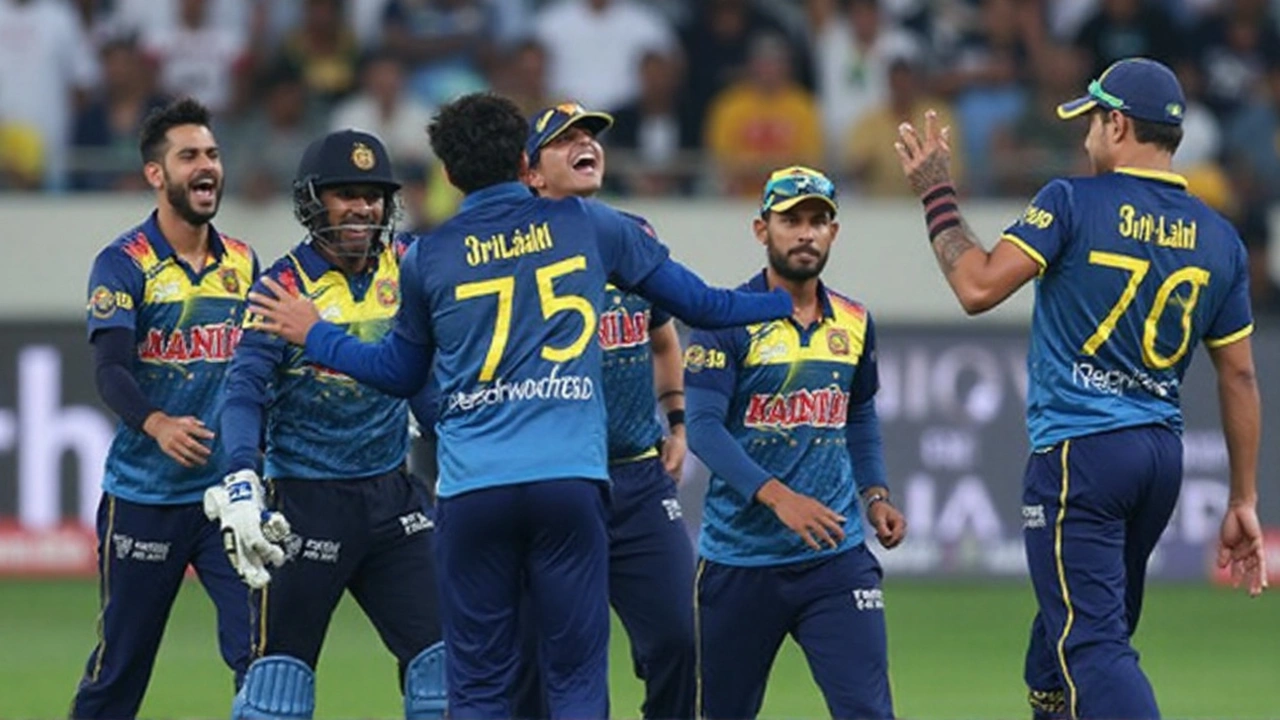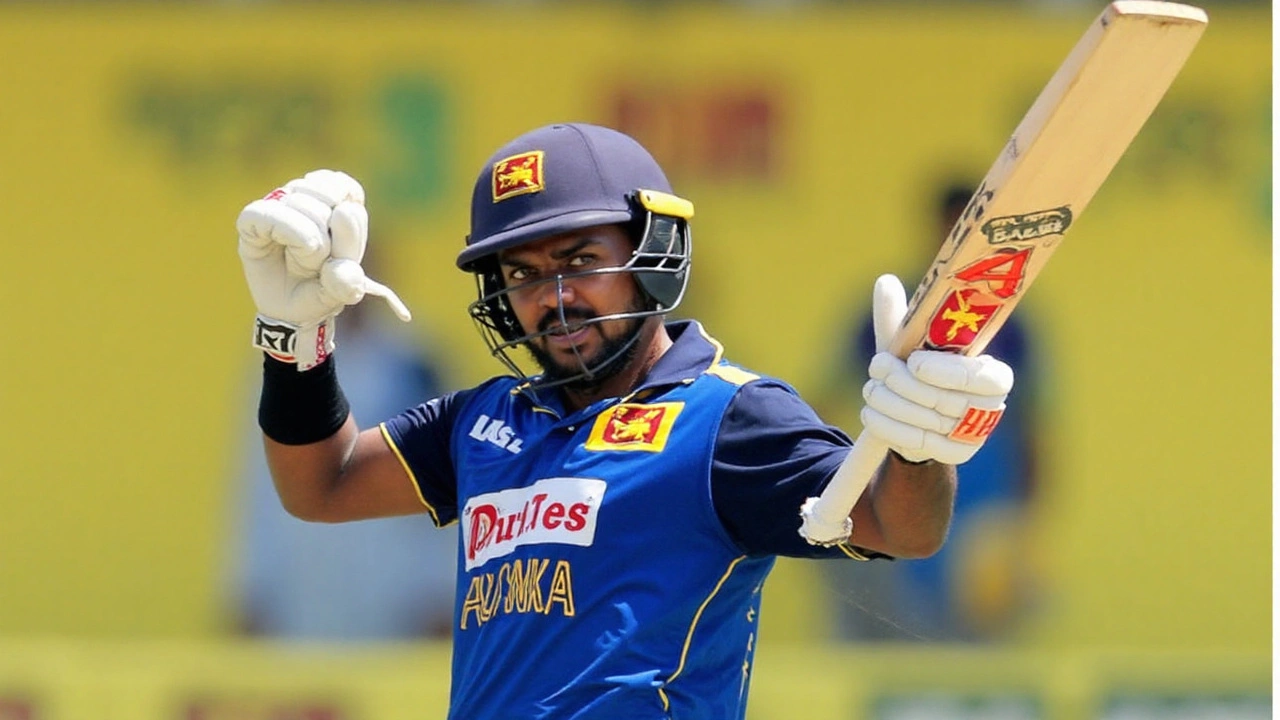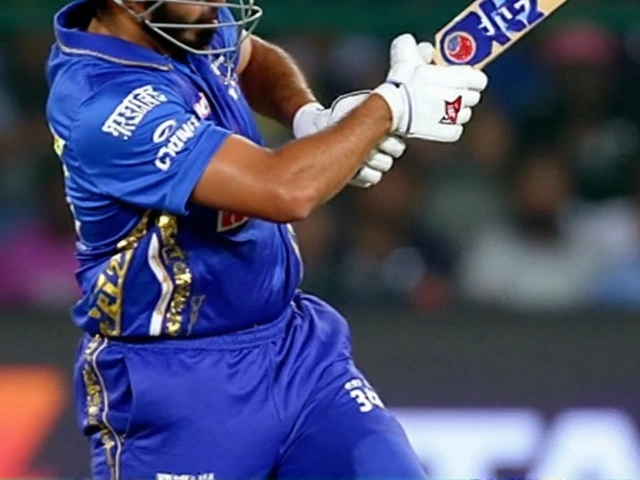Sri Lanka unleash a clinical ODI performance
This wasn’t a squeaker. It was a statement. Sri Lanka hammered Australia by 174 runs in the second ODI, rolling the visitors for 107 in 24.2 overs after posting 281/4 with calm, calculated batting. It ranks among Sri Lanka’s most one-sided wins over Australia and felt every bit as authoritative as the margin suggests.
The script was simple: bat first, use the surface smartly, and squeeze the chase. Sri Lanka ticked each box. The top order set a steady base, the middle unfurled risk-free partnerships, and the finish was tidy rather than frantic. No collapse, no panic—just patient scoring and clean game management.
Kusal Mendis took Player of the Match honors by doing exactly what the innings needed. He anchored. He turned good balls into singles, punished the rare errors, and kept the run rate healthy without swinging for the fences. When the bowlers tightened the screws, he nudged; when they missed, he drove and cut. That rhythm let others bat around him without chasing the game.
What made 281/4 feel bigger than the raw number was how Sri Lanka reached it—wickets in hand, partnerships at key moments, and discipline in the middle overs where ODIs are often won or lost. The batters weren’t seduced by early boundary opportunities; they were happy to stack 30s and 40s through rotation and only cash in when the bowlers blinked. Australia bowled some probing spells, but Sri Lanka kept their shape, resisted the release shot, and made sure the innings never stalled.
Small details added up. Left-right combinations forced field changes. The running between the wickets was sharp, with twos stolen to rattle the infield. When the ball softened, Sri Lanka didn’t overreach—they accepted the grind, protected their set batter, and trusted the last 10 overs to lift them past 280. It was mature ODI batting, the kind that makes chases feel longer than they look.
By the time the innings closed, Australia were staring at a target that demanded a clean start and a calm rebuild. They got neither.

Australia unravel as Fernando leads the charge
The chase went off the rails quickly. Early wickets had Australia wobbling at 33/3, and the tone never recovered. Sri Lanka’s seamers hit a fuller length than Australia managed, searched the stumps, and made the ball talk just enough. Fernando led the way with relentless accuracy, picking the right moments to slip in changes of pace. The knuckle ball, in particular, kept Australia guessing—hard to pick, harder to time.
Fielding finished what the bowlers started. Sri Lanka held their catches, cut off singles with bustling energy, and turned half-chances into moments that killed any momentum. You could see it in the body language: Australia were stuck, hesitant to commit to the front foot, late on the pull, and constantly second-guessing what was coming next.
Big names couldn’t steady the slide. Steve Smith and Travis Head fell before a stand could form, and the middle order never found the tempo to rebuild. When the scoring rate fell under three an over, desperation crept in. Rash shots followed. Sri Lanka didn’t need magic balls—just discipline, smart fields, and patience. Once the tail was exposed, it was over in a hurry.
Australia were bundled out for 107 in 24.2 overs, a collapse that put the spotlight on their decision-making against changes of pace and their struggle to rotate strike when the field squeezed. Sri Lanka’s bowlers mixed hard lengths with wobble seam, pinned batters on the crease, and made 281 look like 320.
What stood out most? The balance. Sri Lanka’s quicks made the dents, the support cast kept every over competitive, and the group moved in sync. No free overs, no cheap boundaries, no lapses in intensity. That’s how you convert a defendable total into an ugly chase.
- Key early strike: Sri Lanka’s new-ball burst removed top-order pillars before Australia settled, flipping the pressure instantly.
- Mendis’ anchor: A composed, low-risk anchor role that held the innings together and set a platform for a clean finish.
- Middle-overs squeeze: Accurate seam and disciplined fields dried up singles; Australia’s rebuild never got going.
- Knuckle-ball threat: Fernando’s variations forced mistimed shots and kept batters off balance.
- Safe hands: Two tough catches stuck, denying Australia the slice of luck they needed to turn the tide.
If you’re Australia, the review meeting writes itself. Their top order has to handle pace-off and late movement better, especially on surfaces that punish all-or-nothing strokes. They also need more singles in the middle overs—too many dots turned the required rate into a mental trap. When conditions don’t offer pure hitting, 70-to-90-run partnerships win chases. They never found one.
If you’re Sri Lanka, this is the template. Bat long, take the game deep, and let your seamers hunt in packs with smart changes of pace. The fielding standard is a huge tick—no easy twos, no fumbles, just clean, competitive overs stacked on top of each other. Do that repeatedly and you don’t have to chase miracles; you manufacture control.
The margin—174 runs—matters for more than bragging rights. Against Australia, it’s a line in the sand. It says Sri Lanka can not only compete but boss the rhythm of an ODI from ball one to handshakes. For a side building confidence and identity, wins like this carry weight in the dressing room. Players believe in roles. Plans feel repeatable. Pressure games feel a little less heavy.
There’s also the quiet value of clarity. Sri Lanka trusted an anchor at the top, protected their hitters for the final phase, and backed a bowling plan built on accuracy, fielding, and variation rather than pure pace. That identity showed up for 100 overs. Australia, by contrast, looked caught between approaches—neither fully attritional nor fully aggressive. That indecision is brutal in ODI cricket, where one bad five-over block can lose the match.
Numbers that tell the story?
- 281/4: a methodical total with wickets in hand, not a scrap to the finish.
- 107 all out: Australia never found a stable partnership.
- 24.2 overs: a chase cut short by relentless pressure.
- 174-run margin: among Sri Lanka’s heaviest wins over Australia.
- 33/3: the early damage that set the tone.
There’s one more layer worth noting: composure. Sri Lanka didn’t try to make the game happen in a rush. They read conditions, adjusted lengths quickly, and stayed patient. That’s often the difference between a good day and a great one. You could see it in the way the captain used his bowlers, the way the field walked in together, and the way the set batters refused to give it away for prideful boundaries.
As the series moves on, Australia will search for a cleaner start and a steadier middle. Sri Lanka will want to bottle this exact blueprint. And fans will circle the next meeting because this rivalry has life again. On this day, though, it was one-way traffic in favor of the hosts in a commanding Sri Lanka vs Australia showdown—batting brains first, bowling bite after.






